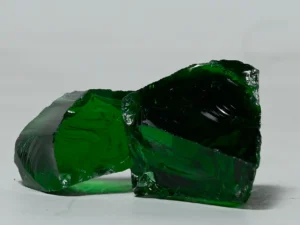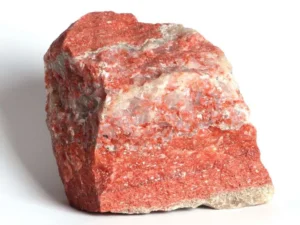Description
Feldspar: The Unsung Hero of Earth’s Crust and Beyond
Feldspar, often overlooked in favor of flashier minerals like quartz or gemstones, is a titan of the Earth’s crust. Making up a staggering 60% of our planet’s outer layer, this ubiquitous mineral group plays a crucial role in everything from the formation of mountains to the production of glass and ceramics. But what exactly is feldspar, and why is it so important?
A Family Affair: Understanding the Feldspar Group
Feldspar isn’t a single mineral, but rather a group of closely related silicate minerals. They all share a basic framework structure of aluminum tectosilicate, but vary in their exact chemical composition. The key players within this family are the alkali feldspars and the plagioclase feldspars.
- Alkali Feldspars: These are primarily composed of sodium (Na), potassium (K), and aluminum silicate (AlSi3O8). Common examples include:
- Orthoclase (KAlSi3O8): Often pinkish or white, and commonly found in granite.
- Microcline (KAlSi3O8): Similar to orthoclase in composition but with a slightly different crystal structure, often displaying a distinctive tartan or cross-hatched pattern under a microscope.
- Albite (NaAlSi3O8): The sodium-rich end member of the plagioclase series, but sometimes classified as an alkali feldspar.
- Plagioclase Feldspars: This series is a continuous solid solution between albite (NaAlSi3O8) and anorthite (CaAl2Si2O8). The proportion of sodium and calcium determines the specific mineral within the series, resulting in minerals like:
- Oligoclase: Richer in sodium than calcium.
- Andesine: Roughly equal proportions of sodium and calcium.
- Labradorite: Richer in calcium than sodium, often displaying an iridescent play of color known as labradorescence.
- Bytownite: Even richer in calcium than labradorite.
- Anorthite: The calcium-rich end member of the plagioclase series.
Where Does Feldspar Come From?
Feldspar forms in a wide range of geological environments, most notably during the slow cooling of magma deep within the Earth’s crust. This process allows for the large, well-formed crystals characteristic of feldspar. It’s also found in metamorphic rocks formed under high pressure and temperature conditions. Weathering of feldspar-rich rocks, like granite, releases clay minerals like kaolinite, forming soils and contributing to the sediment that eventually forms sedimentary rocks.
Key Properties and Identification:
Feldspar minerals share several common physical properties that aid in their identification:
- Hardness: They are relatively hard, ranking 6 on the Mohs hardness scale.
- Cleavage: They exhibit excellent cleavage in two directions, usually at or near 90 degrees. This means they tend to break along flat, parallel surfaces.
- Luster: They have a vitreous (glassy) luster.
- Color: Their color is highly variable, ranging from white, gray, pink, and brown to yellow or even green.
Feldspar’s Diverse Applications:
Beyond its fundamental role in geology, feldspar has a variety of industrial applications:
- Ceramics: Feldspar is a crucial ingredient in ceramics, acting as a flux during firing, lowering the melting temperature of the mixture and creating a glass-like phase that binds the other components together.
- Glassmaking: Feldspar provides alumina to the glass mixture, improving its hardness, durability, and chemical resistance.
- Abrasives: Some varieties of feldspar, particularly microcline, are used as mild abrasives in polishing compounds.
- Gemstones: Certain types of feldspar, especially labradorite and moonstone (a variety of orthoclase), are prized for their unique optical properties and used in jewelry. Labradorite’s labradorescence and moonstone’s adularescence (a shimmering, milky effect) are highly sought after.
- Fillers and Extenders: Feldspar is also used as a filler in paints, plastics, and rubber products, providing bulk and improving their properties.
Feldspar: A Cornerstone of Our World:
From the towering peaks of mountains to the durable surfaces of our everyday ceramics and glass, feldspar plays an essential, often invisible, role. Its abundance, diverse forms, and unique properties make it a cornerstone of our planet’s geology and a vital component in numerous industrial applications. So, the next time you admire a piece of granite or use a ceramic mug, take a moment to appreciate the unsung hero – feldspar.











Reviews
There are no reviews yet.